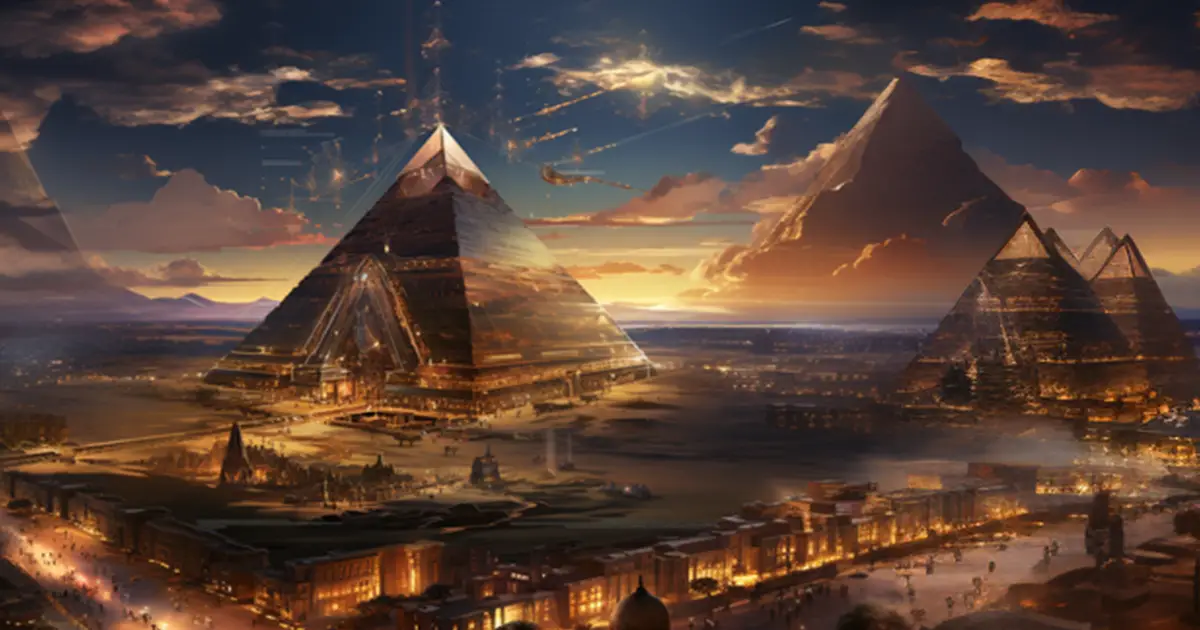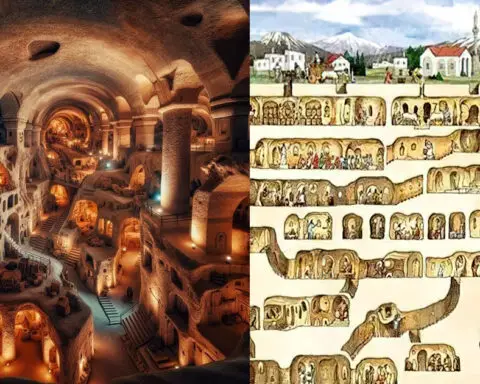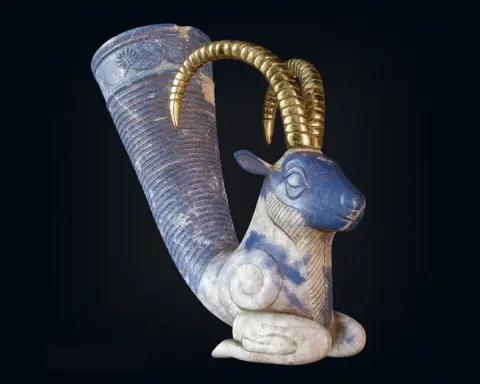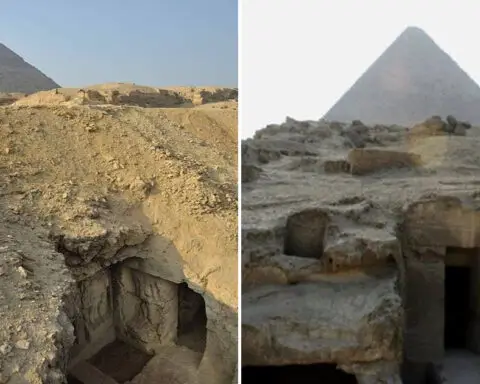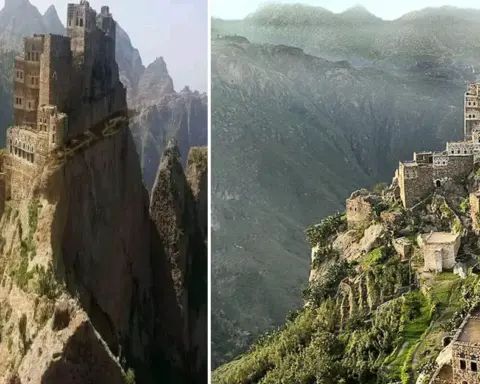The Great Pyramid of Giza, an architectural marvel that has stood the test of time, is traditionally seen as a monumental tomb for the pharaohs of ancient Egypt. However, a wave of recent discoveries and analyses paints a different picture, suggesting that this ancient wonder might have been the world’s oldest and most sophisticated power plant. This theory, which posits the Great Pyramid as a source of energy generation, invites us to reconsider our understanding of ancient technologies and the true purpose behind this iconic structure.
The Architectural Genius Behind the Pyramid
The construction of the Great Pyramid is nothing short of an engineering feat, involving the meticulous placement of over two million stone blocks. The precision and effort required for such an endeavor hint at a purpose beyond mere burial. The absence of traditional tomb elements and the use of materials known today for their conductive properties have sparked debates about the pyramid’s true function.
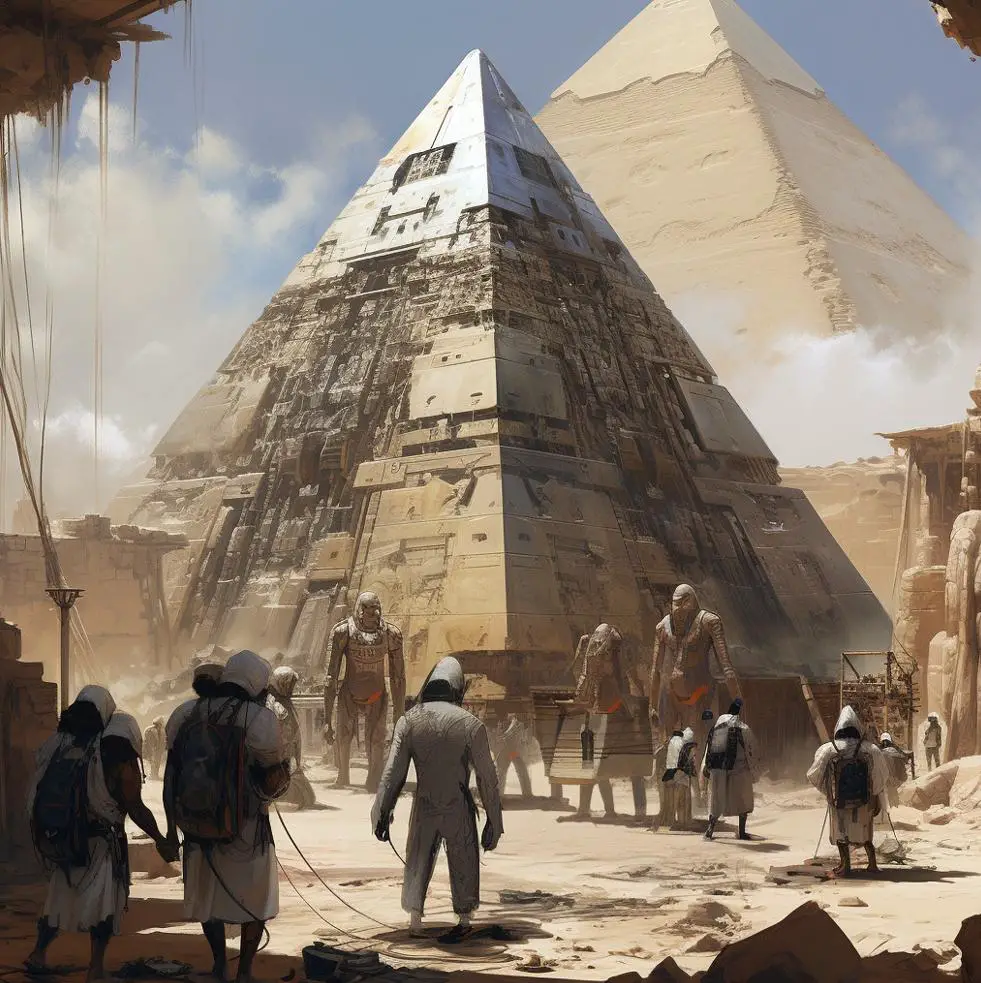
Beyond Tombs: A Theoretical Powerhouse
The hypothesis that the Great Pyramid served as a power plant is bolstered by its unique architectural and material characteristics. Unlike any other tomb, the pyramid incorporates materials that are not just symbolic but functional in terms of conductivity and energy transmission. This notion is further supported by the absence of expected tomb markers, such as hieroglyphic inscriptions, mummies, or treasure chambers.
The Baghdad Battery: A Glimpse into Ancient Electrical Knowledge

The discovery of the Baghdad battery suggests that ancient civilizations had a working knowledge of electricity long before the modern era. This artifact, along with similar findings, indicates that the ancients might have utilized electrical power for purposes that have yet to be fully understood. The implications of such technology in the construction and use of the Great Pyramid are profound, hinting at an advanced understanding of natural forces.
Materials and Design: Clues to an Electrical Purpose
The choice of limestone, dolomite, and granite in the pyramid’s construction is particularly telling. These materials, known for their ability to conduct electricity, point to a sophisticated knowledge of energy manipulation. The internal chambers and passageways of the pyramid, often thought to be for ceremonial use, may instead have been part of an intricate system designed to generate, store, and transmit energy.
The Mystery of the Queen’s Chamber
Perhaps the most compelling evidence for the power plant theory is found within the Queen’s Chamber. The discovery of copper wires and symbolic diagrams reminiscent of modern electrical wiring suggests a purpose far beyond the ceremonial. These findings propose the chamber’s use as a vital component in the pyramid’s energy system, possibly acting as a capacitor or generator.
Harnessing the Earth’s Natural Energy
The Great Pyramid’s location is no mere coincidence. Built atop geological features that could naturally produce electrical currents, the pyramid might have been strategically placed to harness and amplify this energy. The proximity to the Nile and underlying aquifers points to a sophisticated understanding of geophysical properties and their potential for energy generation.

A Wireless World: Tesla’s Vision Realized?
The theories surrounding the Great Pyramid often draw parallels to Nikola Tesla’s experiments with wireless energy transmission. The pyramid’s construction materials, combined with its geometric precision and alignment with Earth’s magnetic field, suggest a capability for wireless power distribution. This theory posits the pyramid as a central power station, transmitting energy to the surrounding civilization without the need for wires.

Rethinking Ancient Technology
The Great Pyramid of Giza, long seen as a silent testament to the pharaohs’ desire for immortality, may instead be a beacon of ancient innovation and technological prowess. The evidence, from construction materials to architectural design, challenges the traditional narrative and opens up a world of possibilities regarding the capabilities of ancient civilizations.
The theory of the Great Pyramid as an ancient power plant not only challenges our understanding of the past but also offers insights into the future of energy generation and transmission. As we continue to explore and understand this ancient marvel, we may find keys to unlocking sustainable technologies and energy solutions inspired by the wisdom of our ancestors.
In conclusion, while the tomb theory has dominated discussions about the Great Pyramid for centuries, the evidence pointing to its use as a power plant is compelling and warrants further investigation. Whether as a tomb or a testament to ancient ingenuity in harnessing the earth’s energy, the Great Pyramid of Giza remains one of humanity’s most enduring mysteries, inviting scholars, scientists, and seekers of truth to unravel its secrets.
VIDEO 1:
VIDEO 2:

